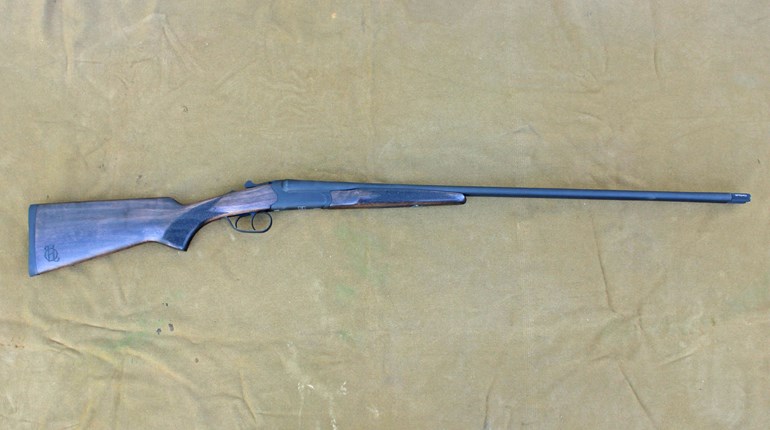We’re betting plenty of American Hunter readers never considered that the .22 LR could be improved, much less that it needs to be. On this episode of #SundayGunday, we’re showcasing a brand-new cartridge from Winchester that aims to do just that. It’s called the 21 Sharp, and there’s a very pragmatic reason for its conception.
The new 21 Sharp—a rimfire cartridge that utilizes a .22 LR case but a .21-caliber, non-heeled projectile that offers several key advantages over the standard .22-caliber projectile, yet remains affordable to consumers.

So what advantages does the 21 Sharp have over the .22 Long Rifle? It’s all in the bullet. The .22 Long Rifle utilizes a round nose, “heeled” bullet, meaning that the exposed portion of the bullet is the same diameter as the case. The rear of the bullet then, in order to fit into the case, has to be narrower than the exposed portion of the bullet. The base of this stepped design is called the bullet’s heel. It works, but as you can imagine, it doesn’t do anything for aerodynamics or terminal ballistics, and, while it has been mass produced for years by just about every big-name in the bullet world, the .22 Long Rifle design presents a major manufacturing hurdle: It’s difficult to produce a premium (or even modern) jacketed bullet utilizing a heeled design. And it’s almost impossible to produce one at a cost similar to traditional lead .22 LR rounds.
Frankly, the heeled design should have been remedied 100 years ago because that’s how long ballisticians have known the design was inferior—and easy to fix. But it was not, and so here we are.
Currently, .22 LR sales account for 2.5 billion of the U.S.’s total 10-12 billion rounds sold annually. Why does .22 LR continue to sell so briskly? Because it’s fun, useful and because it’s cheap. Yet some states like California, as well as other countries, have banned lead ammo for hunting. Others have banned it outright. More jurisdictions are almost certainly on the way. And, at this time it’s impossible to make a non-toxic .22 LR bullet en-masse at the same cost as a lead one. So Winchester is hedging for the future while getting ahead of what competition is surely to come. The new 21 Sharp can be mass produced efficiently, in both lead and non-toxic offerings, producing an affordable plinker for the consume no matter where he lives.

For the mechanically curious among us, the .22 LR’s bullet diameter is .2255 inch, compared to the 21 Sharp’s bullet diameter of .2105. Both cartridges are spec’d to the same maximum average pressure of 24,000 psi. Both have identical overall lengths of 1.00 inch, as well as identical case diameters, so both cartridges utilize the exact same case.
Although Winchester Ammo says it will offer a range of bullet weights from 25 to 42 grains, from traditional lead offerings to an all-copper, non-toxic projectile. The 21 Sharp’s primary loading at this time is a 34-grain JHP bullet with an advertised muzzle velocity of 1500 fps, and a 25-grain Copper Matrix load with a muzzle velocity of 1750 fps. At the range, this equates to all-day rimfire fun, with a bit of added velocity to buck the wind.
The .22 LR will always have a use in shooting, hunting and competition if the NRA has its way, because outpricing hunters and shooters is almost as bad as banning. But for folks in places like California who don’t wish to break the law, they now have an economical .22 LR-style option. They can re-barrel their guns for the 21 Sharp or, preferably, buy one of several new firearm models from Winchester, Savage and soon-to-be other companies who will offer factory guns in Winchester’s new California-friendly .22 clone, the 21 Sharp.
For more information on the 21 Sharp, visit winchester.com, and for more #SundayGunday check out our playlist on YouTube, where all previous episodes are archived.























